Every year, the United Nations celebrates the International Day of Women and Girls in Science. For 2022, the focus is not only the role women and girls play in STEM as beneficiaries, but also as agents of change.
AZoM aims to share materials science and engineering with the world and with people who can make a difference. Therefore, this year, we are highlighting a selection of women that are driving innovation in this sector.
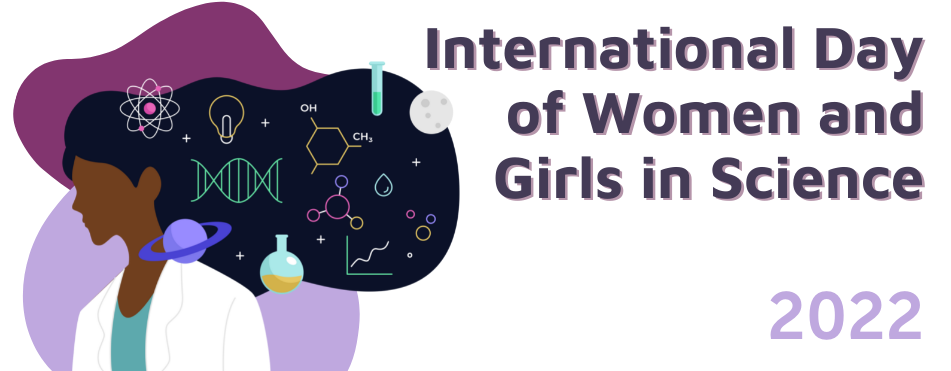
We asked each representative three questions exploring their journey into STEM careers, their thoughts on the future of their field, and the irreplaceable role of women in these spaces.
How did you come to be involved in the scientific community, and what advice would you give to young women and girls who are looking to start their careers within the STEM sector?
Kirsten Laurin-Kovitz, Director of the Strategic Security Sciences Division at Argonne
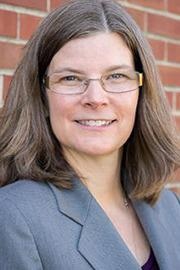 I credit my highschool physical science teacher with pointing me toward engineering. Like many at Argonne, I was a good student and loved math and science. One day this teacher kept me after class and asked if I knew what engineering was.
I credit my highschool physical science teacher with pointing me toward engineering. Like many at Argonne, I was a good student and loved math and science. One day this teacher kept me after class and asked if I knew what engineering was.
As the daughter of a pastor and teacher, I had no point of reference, but after he suggested engineering as a possible career for me, I never looked back. My father was particularly encouraging. I studied engineering first at the University of Illinois-Urbana/Champaign and then later at Northwestern University, ultimately getting a Ph.D. in Mechanical Engineering. My thesis project was based on nuclear reactor analysis research I conducted at Argonne. From there, I became involved in projects related to promoting the peaceful use of strategic and emerging science and technology – like nuclear energy.
Not every girl will have someone in their life that encourages them to pursue STEM fields, and many girls may not have a positive view of jobs in STEM. I would encourage young women to explore as many different fields and jobs as they can including STEM.
There are so many ways to impact the world through STEM and research – whether it’s discovering new medicines and treatments to fight disease or designing clean energy systems to protect the planet or securing information and critical infrastructure from cyber-attacks.
Look for role models and mentors that can share their stories and provide guidance on how to reach your goals. You might discover a passion for STEM you didn’t know about.
Athina Anastasaki, an assistant professor at ETH Zurich focusing on the next generation of polymers and their recycling
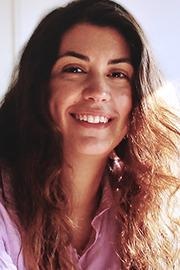 I was privileged to grow up in a family where both of my parents actively pursued a career: my mother as a medical doctor and my father as a university professor. This environment inspired me to also follow a scientific pathway and I chose chemistry for my Bachelor studies simply because I had an amazing chemistry professor in high school. I continued to a Ph.D. due to my love for teaching. My goal was to become a teacher; where I would teach did not really matter to me. Although initially I really did not like the uncertainty involved in experiments, I grew to enjoy research and this led me to my current position.
I was privileged to grow up in a family where both of my parents actively pursued a career: my mother as a medical doctor and my father as a university professor. This environment inspired me to also follow a scientific pathway and I chose chemistry for my Bachelor studies simply because I had an amazing chemistry professor in high school. I continued to a Ph.D. due to my love for teaching. My goal was to become a teacher; where I would teach did not really matter to me. Although initially I really did not like the uncertainty involved in experiments, I grew to enjoy research and this led me to my current position.
My advice to young women and girls is to embrace their female nature. The reason why we want more women in STEM is to be represented by different voices. We therefore should not suppress or hide whatever attributes make us who we are. If we are more compassionate or empathetic than men, then I think these are great skills and we can use them to become better leaders. Equally, we need to be aware of our weaknesses and improve them. I know many women who struggle with self-esteem and confidence issues; sometimes the more talented a female is the more insecure she feels. If this is how you feel, be reassured that it is very common. To build your confidence, I suggest to find role models with whom you can share your concerns and be inspired. Finding allies and supporters was the key to strengthening my confidence.
Dr. Anne Meyer, associate professor at the University of Rochester. Her research focuses on using quantitative techniques in the fields of biochemistry, microbiology, and biophysics to study structural dynamics, macromolecular interactions, and physiological responses of organisms to environmental stressors
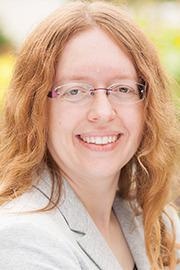 I became involved in the scientific community because I really enjoy asking questions about how things work, learning new things about the world around me, and trying to create new things that have never existed before. Being a scientist is such a fulfilling career that lets me learn new things every day and help junior scientists to develop new skills and push forward the boundaries of science.
I became involved in the scientific community because I really enjoy asking questions about how things work, learning new things about the world around me, and trying to create new things that have never existed before. Being a scientist is such a fulfilling career that lets me learn new things every day and help junior scientists to develop new skills and push forward the boundaries of science.
My advice to young women and girls who are interested to start a career in the STEM sector is to find a supportive network of peers and mentors who can support you both scientifically and emotionally as you go through your journey. You will need a network no matter what stage of your career you are in, from student all the way up to running a lab!
If you run into problems being accepted into an "old boy's club," my advice is not to bother trying to be accepted in groups that don't value you, but instead to build your own "club", where you are valued and your values are represented.
Dr. Olga Kvashenkina, Director of the Scientific and Technical Center at SPbPU and President of the company "SNDGroup"
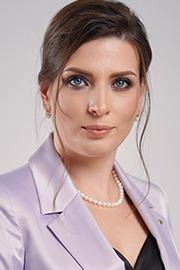 My interest in scientific knowledge appeared when I studied at school. At first, I wanted to become a surgeon, but later I found an interest in physics and mathematics. I began my studies at Smolensk State University (Faculty of Physics and Mathematics). During my final years at the university, I got an internship at the Ioffe Institute in St. Petersburg. I was engaged in the research there, and I was very lucky to have mentors who understood how to apply certain developments in practice.
My interest in scientific knowledge appeared when I studied at school. At first, I wanted to become a surgeon, but later I found an interest in physics and mathematics. I began my studies at Smolensk State University (Faculty of Physics and Mathematics). During my final years at the university, I got an internship at the Ioffe Institute in St. Petersburg. I was engaged in the research there, and I was very lucky to have mentors who understood how to apply certain developments in practice.
I wanted to do scientific research and experiments to study the processes which occur inside materials and thin films, and to create practical R&D projects which will improve quality of life. Therefore, after graduating from Smolensk, I entered the graduate school of Peter the Great St. Petersburg Polytechnic University (SPbPU) in the Department of Physical Electronics. Here I continued my scientific research, rose from a postgraduate student to the director of the Scientific and Technical Center, and now in my work I combine science and business.
For those who plan to start their career in science I can give this advice: find your topic and be passionate about it. A drive always helps to move forward. I remember that many years ago someone told me that one of my developments was not promising, and no one would finance such research. I was very disappointed and at some point even thought about changing my career. However, now I would definitely find arguments in its favor, and I managed to attract investors because I am sure that perseverance leads to results.
I suggest to everyone not to stop and always learn. It is very sad when a person freezes in their development and relies only on old results. And, of course, keep a work-life balance! Be sure to find time for your family and your hobbies.
Dr. Yurena Seguí Femenias holds a degree in Industrial Engineering from the Universitat Politècnica de Catalunya (Spain) and a doctorate in Civil Engineering from ETH Zurich. She is also the co-founder and CEO of DuraMon GmbH
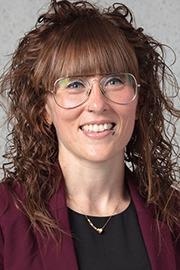 I find it interesting to know why things work in a certain way or how, by combining certain scientific approaches, you may get innovative results. For this reason, I thought studying engineering would be a good fit for me. I moved to Barcelona when I was 18 where I started my studies in Industrial Engineering, which I finished at ETH Zürich through a student exchange program. Shortly after finalizing my studies, I started a Ph.D. at ETH Zurich, where I consolidated my interest and curiosity for science thanks to being involved in (in my opinion) a very interesting topic.
I find it interesting to know why things work in a certain way or how, by combining certain scientific approaches, you may get innovative results. For this reason, I thought studying engineering would be a good fit for me. I moved to Barcelona when I was 18 where I started my studies in Industrial Engineering, which I finished at ETH Zürich through a student exchange program. Shortly after finalizing my studies, I started a Ph.D. at ETH Zurich, where I consolidated my interest and curiosity for science thanks to being involved in (in my opinion) a very interesting topic.
Even though a scientific career has been difficult at times (persistence and many working hours are needed at times!), I have also been very lucky to find great friends and true mentors.
My advice for young women and girls who are looking to start their career within the STEM sector: take one step at a time, do not rush, and enjoy the path, keep an open mind and try to learn from the people around you. I believe you will always end up finding mentors who inspire and motivate you.
Nicole Aegerter, Ph.D. student in the field of thermoplastic composites for structural applications at ETH Zurich
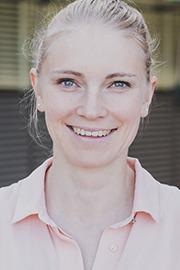 My advice to younger women; don’t overthink whether you could fail, and follow your interests irrespective of the field. Personally, I was always very much interested in the technical and scientific aspects of life and received a lot of support from my personal environment such as family and teachers.
My advice to younger women; don’t overthink whether you could fail, and follow your interests irrespective of the field. Personally, I was always very much interested in the technical and scientific aspects of life and received a lot of support from my personal environment such as family and teachers.
I started my doctorate as a follow up to my Master’s thesis because I simply wanted to dig deeper and I saw potential for the technology to create an impact.
Science, as well as gender equality, are both vital in achieving the UN's sustainable development goals, yet women still only represent 33.3% of the global research community. What more could be done to help women become more prominent in STEM in the future?
Kirsten Laurin-Kovitz, Director of the Strategic Security Sciences Division at Argonne
Programs specifically for women and minorities can introduce them to the opportunities and break down stereotypes associated with STEM. We need to raise awareness at an earlier age to prepare girls for STEM, keep STEM career options open to them, and influence their career decisions. Mentoring programs can also help as being the only woman in a field can be challenging. Finally, once women and minorities join the field, we need more programs to address the challenges of work-life balance and inclusion in the workplace.
Athina Anastasaki, an assistant professor at ETH Zurich focusing on the next generation of polymers and their recycling
Certainly, one goal would be to improve the visibility of female academics to school-age students through outreach activities; this is usually the time to set things right so that young girls know that pursuing science is an option for them. I am pleased to see more and more mentorship provided to female researchers during their Ph.D. and post-doctoral studies and this really makes a difference. If we want more women to choose academia and/or science, we should be offering mentorship already at the Bachelor's level and even in school.
If you are mentored by a female scientist, it makes it more likely for you to be inspired and also follow this career. However, it is difficult to make suggestions on how to improve gender equality without putting an additional burden on the minority of female academics and scientists. We already spend more time than our male colleagues in visibility events, committees, mentoring other females, etc. and of course, this may also affect our research. This is where we need the support of our male colleagues.

Image Credit: plataa/Shutterstock.com
I am very proud to be part of a supportive polymer chemistry community where my male colleagues have voluntarily provided a lot of mentorship and support which has made my academic life much easier. A single man can positively affect many female scientists so please be that man! Last but not least, we should consider why several outstanding female colleagues leave academia prematurely.
From my personal experience, some colleagues cite not being good enough (although they are!) and some others chose to prioritize their spouses and families over their careers. Can we not have them both? I think we can, but aside from mentorship we also need financial support for our colleagues who choose to have kids. For example, offering maternity leave without also offering funding for a senior post-doc to manage the lab during the leave would not help much. This could be one strategy towards real equality.
Dr. Anne Meyer, associate professor at the University of Rochester. Her research focuses on using quantitative techniques in the fields of biochemistry, microbiology, and biophysics to study structural dynamics, macromolecular interactions, and physiological responses of organisms to environmental stressors
Many women are hindered from progressing in a science career due to structural inequalities and biased treatment.
Women scientists will only thrive when they get equal space and funds to start their research programs, when their grants are reviewed in an unbiased manner, and when their papers are cited at the same rate as papers with male authors.
Women faculty members will need support from their institutes to relieve their administrative and teaching burdens when they are coming back from parental leaves to allow them to focus on revitalizing their research programs. Similarly, women graduate students and post-docs will need stronger parental leave policies to allow them to grow their families without losing supported time on fellowships or incurring academic penalties, as well as greater financial support so that they can afford to take sufficient parental leaves and to pay for sufficient childcare to allow them to continue their research.
Dr. Olga Kvashenkina, Director of the Scientific and Technical Center at SPbPU and President of the company "SNDGroup"
I think we need to move towards the popularization of a career in science in general, and also in media. Of course, scientists and their work should be financially supported. It is impossible to be engaged even in your favorite work if there is not enough money even for your own needs. It is also necessary to establish a dialogue between business, scientists, stakeholders, universities, etc. in order to effectively implement scientific results. In Russia, I have already initiated such a project.
Dr. Yurena Seguí Femenias holds a degree in Industrial Engineering from the Universitat Politècnica de Catalunya (Spain) and a doctorate in Civil Engineering from ETH Zurich. She is also the co-founder and CEO of DuraMon GmbH
The fact that the scientific community has been mostly represented by men may provide the false idea or cliché that this is not a career path for women. Although these are only stereotypes and biases, I believe it conditions, maybe subconsciously, the mindset of many people, to perceive science as a rather male career path.
Here I think a key activity is exposure: it is important to show that there are women in science that are equally successful.
This can be reinforced, for example, by exposing young girls to STEM activities or having mentoring programs to promote science among women from a young age. Nevertheless, the successful promotion of science among women is only possible in a safe environment. A culture of equality, open communication, and zero harassment must be a “must”.
Nicole Aegerter, Ph.D. student in the field of thermoplastic composites for structural applications at ETH Zurich
Today, our societal structures still keep many young women from following their scientific interests, which leads to a vicious circle because fewer women become role models for the next generations. Personally, I try to be a good role model as a teaching assistant and advisor of student projects, and at the same time join networks focusing on closing the gender gap. At the same time, it is essential to further invest in activities that are already in place e.g. fostering girls’ interests in MINT (mathematics, informatics, science, and technology) from kindergarten on, or companies starting to stop gendering certain toys and clothes for boys or girls only.
Materials scientists and engineers work in a myriad of sectors ranging from aerospace to biomaterials. In recent years we have seen some incredible advancements; are there any specific developments you are excited to see and how do you expect your particular field to evolve in the next ten years?
Kirsten Laurin-Kovitz, Director of the Strategic Security Sciences Division at Argonne
I am excited to see the developments driving the expanded global deployment of civil nuclear energy systems. Nuclear energy is a major source of clean, reliable, and flexible carbon-free energy with enormous potential to enhance energy security, economic prosperity, and quality of life and at the same time meet global decarbonization goals. Over the next ten years, we will see advances in nuclear reactors and fuel cycles and the commensurate security approaches that will enable the deployment of safe, secure, and sustainable future nuclear energy systems.
Athina Anastasaki, an assistant professor at ETH Zurich focusing on the next generation of polymers and their recycling
If I had to choose a more recent discovery, that would certainly be the mRNA vaccines. It is a beautiful example of why fundamental science should be supported and funded even without a clear application in mind so we are ready when a rainy day comes. With respect to my particular field, my group works in the area of synthetic polymer chemistry.
Over the last decades, our community has focused on developing several ways to make a range of materials with unprecedented properties and functions. I think it is about time to start unmaking them and reusing the starting materials, so I hope and expect my field to focus more on polymer recycling and upcycling methods.
Dr. Anne Meyer, associate professor at the University of Rochester. Her research focuses on using quantitative techniques in the fields of biochemistry, microbiology, and biophysics to study structural dynamics, macromolecular interactions, and physiological responses of organisms to environmental stressors
It has been so great to see synthetic biology mature as a field to the point that we now have the tools that we need to develop new technologies using engineered biological parts. 3D bioprinting is opening a whole new field of engineered living materials, and I expect that incorporating engineered organisms into these 3D-printed materials will allow for the production of an endless array of smart, responsive materials that can be sustainably produced, regenerated, and shared within communities.
Dr. Olga Kvashenkina, Director of the Scientific and Technical Center at SPbPU and President of the company "SNDGroup"
There are several areas of material science that should be noted. First of all, these are, of course, carbon materials, in particular graphene, fullerenes, and nanotubes. Nanotubes have become, in fact, the emblem of nanotechnology. The great hopes of scientists are dedicated to these materials. Currently, the main task for scientists is to develop a technology for creating carbon nanotubes on an industrial scale. Due to its biocompatibility, mechanical strength, and electrical conductivity, graphene-based materials found applications in various fields. In particular, graphene filters and conductive and wear-resistant coatings have been developed.
The Issues Women in Science Face | Demilade Fayemiwo | TEDxUniversityofJohannesburg
Video Credit: TEDxTalks/Youtube.com
In addition, graphene-like coatings can be used as the basis for a sensitive element in sensors and thermoelectric converters. An example of such use can be the thermoelectric generator concept that was developed by our scientific group. In addition to carbon materials, there is an interesting area dedicated to composite materials. These can be based on well-known materials, for example the combination of metals with unique properties.
Moreover, combinations of certain metals with the correct ratio provide the possibility to obtain structures with a high thermal energy reserve. Such structures can be used as compact and reliable heat sources in electronics assembly and instrument making. Any achievements of modern materials science are impossible without modeling the properties of materials by methods of physical, mathematical, and computer modeling. New methods of neuroprediction appear, which use special algorithms to calculate the prospected material properties. These methods help to reduce the time of experiments by tenfold and a hundredfold.
Dr. Yurena Seguí Femenias holds a degree in Industrial Engineering from the Universitat Politècnica de Catalunya (Spain) and a doctorate in Civil Engineering from ETH Zurich. She is also the co-founder and CEO of DuraMon GmbH
I personally believe that creating digital twins of infrastructure (e.g., bridges) or even cities can lead to great advancements. To do so, one obviously needs reliable and accurate data that only science, under the appropriate field conditions, can provide. For example, in my specific field, having digital twins of concrete infrastructures can provide many benefits such as extending safely the life of our infrastructure or optimizing the time and type of repair when needed. This will result in economic and environmental sustainability. I personally would love to see how digital twins and the internet of things can be used to make our cities greener and safer.
Nicole Aegerter, Ph.D. student in the field of thermoplastic composites for structural applications at ETH Zurich
Considering our global climate challenges, it is essential to consider the life cycle of every individual product from cradle to grave when developing new solutions. This holds for mobility and construction, but also energy generation and energy storage. In my particular field of recyclable and lightweight materials for structural applications, we see a strong and growing pull from industry and science to support sustainable solutions.
Banner Image Courtesy of AZoNetwork with Material from plataa/Shutterstock.com